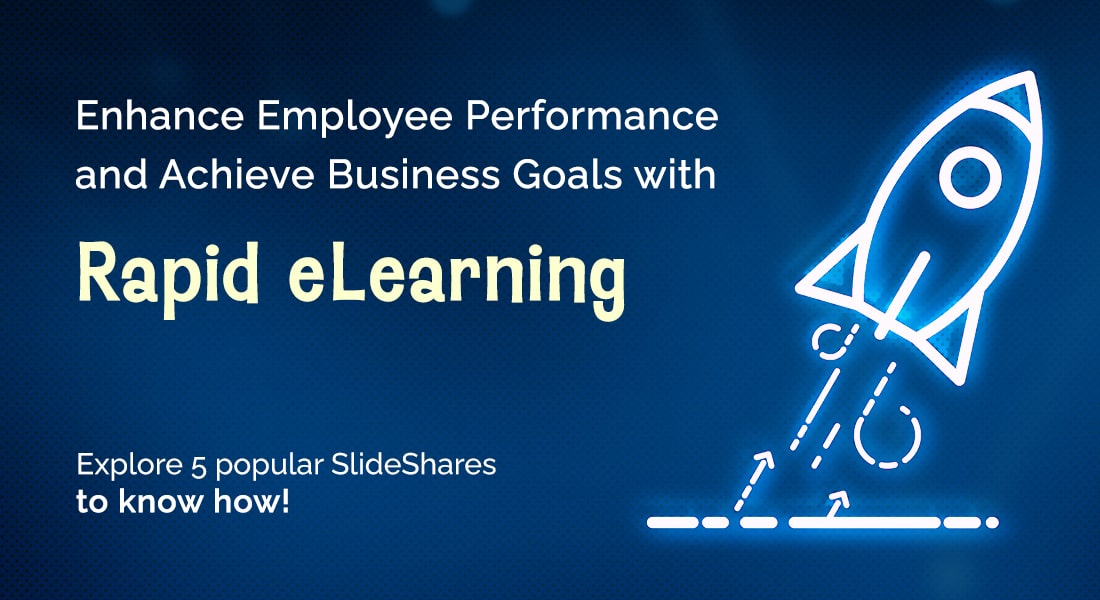How to Choose the Right Vendor for Outsourcing Blended Learning

Blended learning courses have a huge potential, and to explore that potential, the in-house L&D teams ought to have expertise in multiple departments. The primary challenges any organization would face would be managing their timelines, budget, and maintaining the quality of training sessions. But that’s the same for every other aspect of training and not only blended learning. We would discuss the challenges in a bit, but an effective solution to overcome these challenges would be outsourcing the design and development processes.
Are You Looking to Outsource Your Blended Learning Development?
Make sure your vendor:
- Provides consultation
- Belongs to a training background
- Inherits proficiency in modern-age instructional designs
- Follows agile project management
- Offers translation services
Read on to understand why these qualities are necessary.
The funny part here is, this way you tackle the challenges by not facing them yourself, but that’s effective anyway. So, let’s first discuss the specific challenges an in-house team might have to face while developing blended learning courses, followed by the tips to choose the right vendor if you plan on outsourcing blended learning development.
Challenges Faced by The In-House Team
- Lack of expertise in multiple formats would be the first challenge that organizations might already be aware of. There are so many formats like microlearning, mobile learning, eLearning, virtual instructor-led training (VILT), and classroom training. Thus, the in-house team might not have the required expertise in these formats individually or they might not have a clear idea of how these formats can be blended together. In-house teams can even get confused about what core content should be delivered through online training methods and what needs to be in the classroom.
- Using authoring tools might be the other challenge because accessing the advanced features of modern authoring tools might be challenging and require a considerable amount of time to get started with. Apart from the features, there are multiple authoring tools to choose from, and every specific tool will have its own benefits. To make the most of these benefits and features, an in-house team would have to upskill and reskill themselves, but it will also hamper their schedule planned for other regular tasks.
Here’s a handy guide that can help you choose the right rapid authoring tool.
There are other sub-challenges that can emerge from these primary challenges like the translation of courses or the post-course assessments, etc. It’s natural for the in-house teams to not have the required expertise in all of these aspects, and thus, outsourcing can be a legit solution. But all outsourcing vendors aren’t necessarily skilled in these aspects either, so choosing the right vendor requires a qualification checklist to be green ticked. Let’s explore the aspects that need to be green-checked while choosing a vendor for outsourcing blended learning design and development.
Vendor Qualification Checklist to Outsource Blended Learning Development
1. Provides Consultation
As I already mentioned, there are so many formats to mix, and to come up with the right blend, the vendor needs to have expertise in all these domains. If a vendor can consult you on the best formats by assessing your training needs, they can be approved for further processes. Apart from the consultation, make sure the vendor can:
- Align your blended learning program with performance objectives.
- Design the overall strategy i.e. what to do, when to do it, and how to do it.
- Identify the missing elements like content gaps.
- Work with multiple authoring tools and VILT platforms.
- Evaluate training at regular intervals to track the effectiveness of the course.
2. Belongs to a training background (both online and classroom)
Blended learning offers you the best of both worlds so when you are choosing a vendor, it’s natural for you to prefer someone who has the relevant knowledge and experience in both the major types of training methods. If a vendor lacks expertise in any of the two, your blended learning course would not reach its desired potential, and to make up for it, you might have to work with multiple vendors, which is a hassle on its own. This will also ensure the conversion of classroom content-in-hand will be converted into eLearning content with respect to relevant instructional design strategies and adult learning principles.
3. Inherits Proficiency in modern-age instructional designs
Learning sessions need to be interactive and engaging, and to provide such an experience, the vendor should be proficient with multiple modern instructional designs like gamification, microlearning, storytelling, etc. To successfully implement these strategies, the vendor should also know how to leverage the power of authoring tools to deliver eLearning courses quickly and efficiently without degrading their quality. A vendor that considers blended learning more as a journey and less as an event, should be a green flag for you to proceed further.
4. Follows agile project management
When you are choosing a vendor, it’s a good idea to look out for someone who insists on following an agile and global project management process. Vendors should make themselves available to teams situated in different regions or countries. Apart from that, they should be able to dedicate a team and a project manager to take care of your development processes. Vendors should also ensure things like identification and rectification of issues should happen in the early development phase to avoid an expensive rework. Lastly, they should test the quality of courses and establish the metrics for their success.
5. Offers translation services
Since most organizations are spread globally, a learning program that is limited to a single language will not be effective. While you are choosing a vendor, it’s crucial to make sure they offer translation services or not. You can always outsource translation separately, but if all the aspects are outsourced to a single vendor, things become more streamlined. It will also save a lot of time that would instead, get used up dealing with multiple vendors.
Parting Thoughts!
Outsourcing is a challenging practice on its own, but once you find the right vendor to outsource blended learning development, the return would be outstanding. eLearning is a crucial part of blended learning programs and thus, custom eLearning development should not be sidelined.




![How to Align Blended Learning Strategy with Business Goals [Infographic]](https://blog.commlabindia.com/hubfs/blogs/blended-learning-align-business-goals.jpg)
